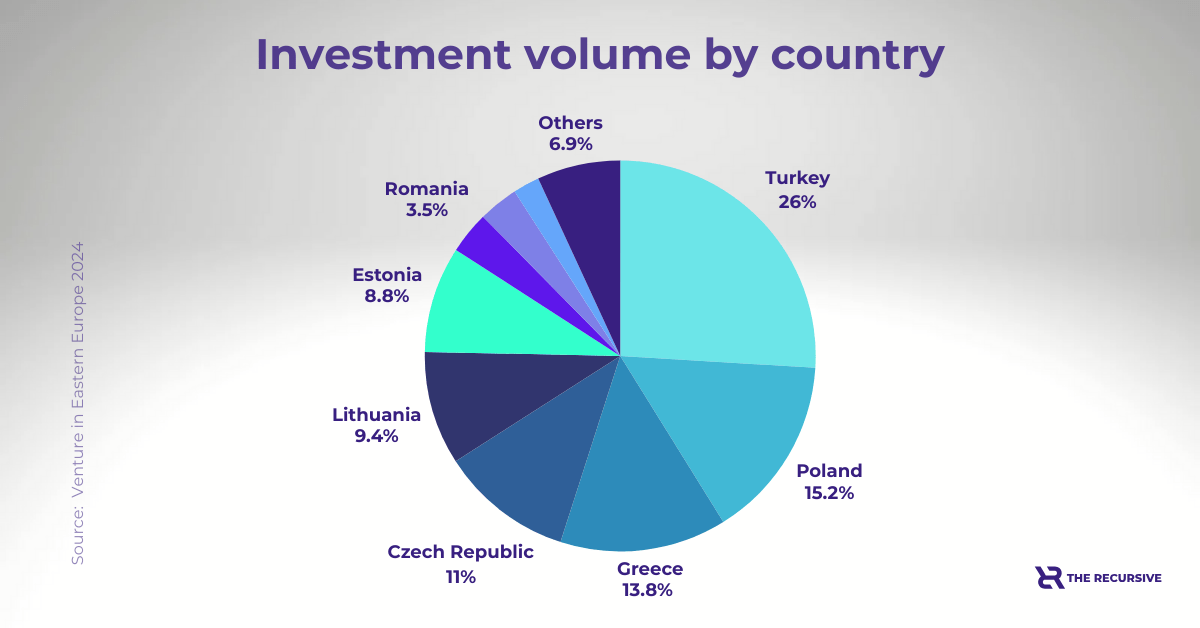Venture Investment in Central and Eastern Europe Sees 56% Growth in 2024
The 2024 edition of the Venture in Eastern Europe report by How to Web, supported by Croatian unicorn Infobip, highlights a substantial increase in venture investment across the region. In 2024, venture deals totaled €3.89B, more than doubling the €1.85B reported in 2023. The inclusion of Turkey in this year’s report contributed €1B to the total. Excluding Turkey, the region still saw a 56% year-over-year increase in investment volume.
* The report covers 19 Eastern European countries: Albania, Bosnia and Herzegovina, Bulgaria, Croatia, Cyprus, Czech Republic, Estonia, Greece, Hungary, Latvia, Lithuania, Moldova, North Macedonia, Poland, Romania, Serbia, Slovakia, Slovenia, Turkey, and Ukraine. 2 countries were not considered, as there were not significant data about the venture deals: Kosovo and Montenegro.
This year’s report takes into account 2 new countries, compared to last year’s edition, Albania and Turkey, and excludes Montenegro.
Czech Republic, Estonia, and Lithuania doubled their volumes
Investment activity was concentrated in a few countries, with 8 nations accounting for over 90% of the total investment, amounting to €3.54B.
The top countries by total venture investment were:
- Turkey: €1,012.2M
- Poland: €592.1M (27.06% increase from €466M in 2023)
- Greece: €536.6M (26.95% increase from €422.7M in 2023)
- Czech Republic: €426M (136.1% increase from €173.1M in 2023)
- Lithuania: €367M (71.43% increase from €214.2M in 2023)
- Estonia: €342.3M (116.65% increase from €158M in 2023)
- Romania: €130.7M (0.85% increase from €129.6M in 2023)
- Slovakia: €129.8M
Countries such as Czech Republic, Estonia, and Lithuania saw the most significant growth, with investment volumes more than doubling compared to 2023.

Later-stage rounds saw a notable increase
Late-stage investments saw a notable increase in 2024, with the following allocations:
- Series A: €633.7M
- Series B: €609.6M
- Series C: €1,192M
These figures suggest an increase in larger, later-stage funding rounds. The report’s authors attribute this trend in part to market conditions prompting investors to explore opportunities in Eastern Europe for Series A and beyond, likely driven by comparatively lower deal valuations and access to a skilled talent pool.